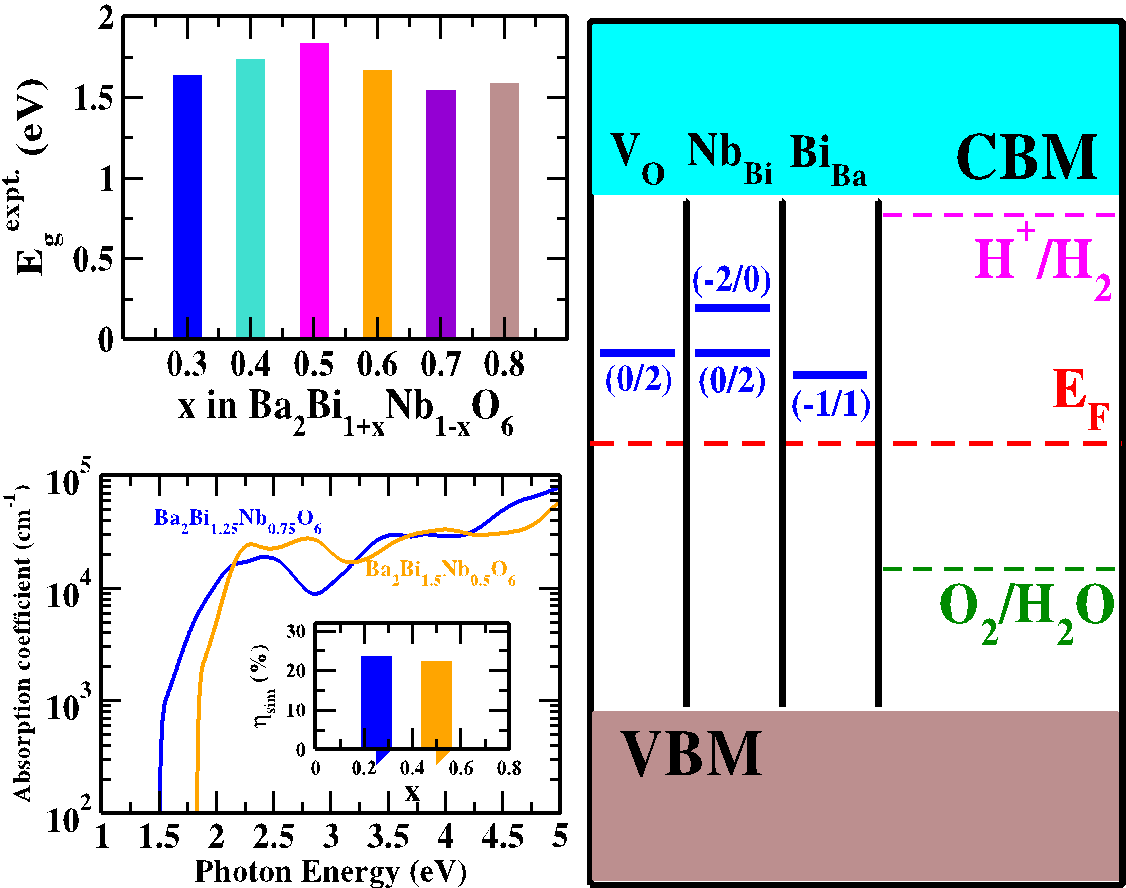


Photovoltaics (PV) and Photo(electro)catalysis (PEC) remain at the forefront of renewable energy research. For devices based on such technologies, the hunt for cheaper, stable and efficient materials is always ongoing. Oxide perovskites have emerged rapidly in recent years because of their excellent stability and high abundance. Herein, we evaluate a class of double perovskite oxides Ba2Bi1+xNb1−xO6 (0 ≤ x ≤ 0.8) (BBNO) from the PV and PEC perspective. BBNO is one of the rare oxides showing band gap (~1.5 eV) in the ideal visible region. Such band gap arises naturally due to the introduction of an intermediate band, which originates from this compound being prone towards forming an offstoichiometric structure. Using an amalgamated theoretical and experimental study, we provide physical insights to this series of compounds, starting from inherent off-stoichiometry to origin of nonradiative recombination. The crux of the study lies in connecting ab-initio defect physics to the experimental observations, while analyzing the effect of growth environment on intrinsic point defects and hence its suitability.

Figure: (top left) Histogram of experimental band gap of Ba2Bi1+xNb1−xO6 (BBNO) with varying degree of offstoichiometry (x). (Bottom left) Simulated absorption coefficient of BBNO with efficiency (theoretical) in the inbox. (Right) Schematic diagram showing the main defects and their charge transitions in the band gap. Also the predicted position of the water redox level with respect to the band gap.





